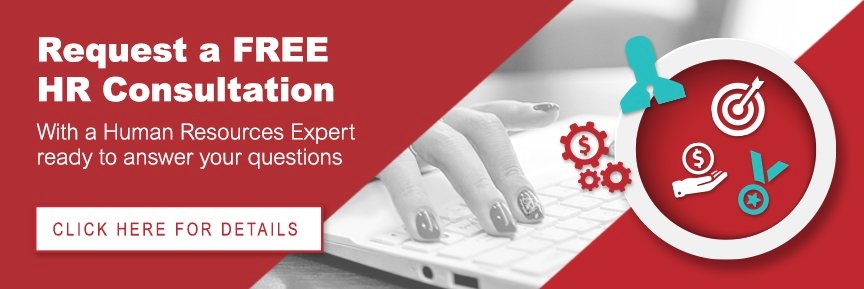
Human resources make up a core part of your company, but it can drag you down, working against your goals and success if it is not operating effectively. An inefficient HR department often has to delegate tasks to people in other parts of the company. The owner may even have to step in to help, which lowers everyone's productivity.
Inefficient HR could prevent paychecks from going out on time, resulting in angry employees and potential compliance issues. Or they may end up working so many hours on tedious paperwork that they burn out and lose their productivity. So, how can you understand HR inefficiencies and adequately deal with them?
Gauging Your HR Effectiveness
Working out how efficient and effective HR is challenging. Some metrics are obvious – does payroll go out on time? Are onboarded employees on the job and ready to go quickly? Others can be more complicated. Here are some metrics you might use:
- How does your employee turnover or churn compare to similar employers in your industry?
- Are your employees overall satisfied?
- Do you have a strong company culture that helps support engagement and morale?
- Is HR staff routinely staying late?
- Is your level of absenteeism unusually high or satisfyingly low?
- How much are you spending on HR per employee?
- How long does it take you to fill a vacant position? And how much does it cost?
- Does your scheduling match up well with the hours your employees work?
Some metrics, like absenteeism and overtime, are easily measured, while some, such as culture and satisfaction, are subjective. Regardless, measuring HR effectiveness is well within your wheelhouse to determine how to make your process more efficient. Fix common issues, such as inconsistent scheduling and sudden shift changes, as these negatively impact morale. High absenteeism also negatively affects productivity.
So, how can you improve it?
Improve Internal Communication Channels
Communicating with your employees is one of HR's key roles. Ensuring all employees receive information through a single channel presents HR as a credible, authoritative source. Make sure that HR always sends a consistent message to employees, especially when making group announcements. Make sure that you use internal communication channels that your employees tend to monitor. It's also a good idea to be consistent in timing. For example, if you send out an employee newsletter, send it out consistently, so employees learn to expect it at given times.
HR must also proactively provide information to employees by presenting resources for common questions. Constantly answering the same questions wastes valuable time, which applies equally to shared processes, so you avoid addressing the same mistakes by multiple people. HR must distinguish between errors to address immediately and those which can wait. Pay attention to employees' questions and concerns and see which should go into the employee manual or onboarding information. Questions asked constantly shouldn't be answered directly but rather through documentation.
Optimal internal structures must place HR as an essential pillar. Managers and supervisors should work closely with HR to manage employee performance issues. Combining their efforts will effectively guide the employee towards satisfactory performance and reduce legal action against the employer. HR are the experts management should turn to for solving a multitude of employee issues. They must present themselves as knowledgeable, credible, and trustworthy sources to provide the proper support.
Create a Culture Goal
One of the most important but most challenging to measure tasks is developing a good company culture. A negative company culture hinders productivity. You need to define a good company culture and then work towards it.
Creating an actual culture goal, then implementing plans to instill it gives your team more structure. Your specific objectives depend on your company. However, typical options might be encouraging positivity, providing feedback, hosting team-building events, and reminding employees about the company's overall goals can all be considered. Implement positive but tangible goals. For instance, "reducing conflict" should be worked towards, but it's a baseline rather than a specific goal you want out on the board. Reward and recognition programs go a long way towards strengthening your culture and values.
Another good goal might be to increase diversity, acknowledging the diversity you already have, and coming up with other ways to make employees feel welcome and appreciated. HR should also be looking at new candidates to see whether they are a good fit. If you have a casual, relaxed office, someone with a stiffer, more formal personality may not be a great fit, even if they are well qualified for the position.
Ensure that your company culture emphasizes goals that support productivity, such as tolerance for diversity, flexibility, and loyalty in all directions.
Partner With a PEO
The monthly tasks HR does, such as payroll, can impede efficiency, leaving HR overworked. They stay late to finish stuff, delegate tasks to other workers, leaving staff tired and stressed. High stress in HR could trickle down into negative company culture.
Outsourcing HR responsibilities can take a load off your team, making them less stressed and allowing more time to focus on internal staff. A PEO handles payroll and benefits administration, giving this freedom to your internal team. Furthermore, PEOs also provide additional perks, such as improved benefits, improving morale, productivity, and retention.
HR is a vital component of a successful company. Partnering with a PEO can get you a Fortune 500 benefits package at small business prices. They help companies achieve their goals and create an effective HR that communicates well, grows a strong culture, and avoids high employee turnover and low morale.

